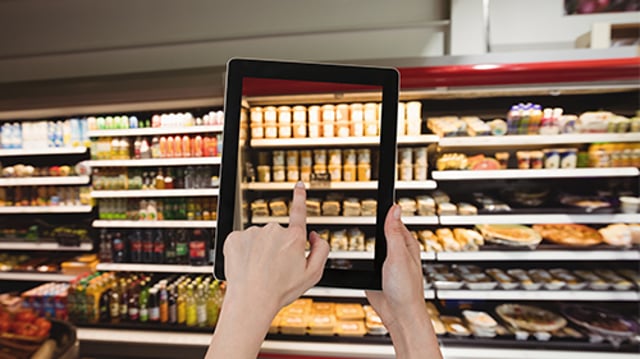3 Retail Trends Impacting Grocers in 2020
In almost every sector, the rapid transition to online shopping is remaking the retail experience, bringing people out of brick-and-mortar shops and into online stores where outlets reach a global audience with ease.
In this regard, the grocery industry is bucking the trend. Even as food delivery services like Peapod and Amazon try to carve out a niche, logistical concerns and customer demands keep people coming into food stores, supermarkets and grocers of all kinds. Indeed, while online sales account for nearly one-third of total sales in many industries, only about 3% of grocery sales happen over the internet.
However, online shopping has completely changed customer expectations when they enter the grocery store, and supermarkets looking to attract customers and boost revenue need to be ready to adapt to these shifting sentiments.
Today, shoppers have more options than ever to complete their grocery lists, and catering to their needs and desires helps ensure a competitive advantage. Here are three trends driving the in-store grocery experience that will matter most now and in the years ahead:
1. Deep Analytics
Online retailers benefit from the deluge of data created by every view, click, purchase and return. Now, that quality data is defining the in-store experience as well. Grocers have many avenues for acquiring this information. From customers using curbside pickup options to integrating scan-and-shop technology throughout stores, in-store data has never been more available.
For example, in 2018, Amazon brought its big data infrastructure to its grocery acquisition, Whole Foods Market. Using a hand-based payment technology, customers roamed stores, simply scanning items and placing them in their carts along the way. While this technique has obvious benefits to customer convenience, it also produces usable data about customer interests and even the physical bounce rate of real food items. Grocers can deploy this data to make critical choices about product placement and other customer-centered decision points.
Having hard data also allows retailers to adequately price and market their slotting fees, a secondary revenue stream that can help make up the notoriously small margins on the food items for sale.
2. TouchScreens
Touchscreen technology is a normative part of our everyday lives. With nearly half of the world carrying them around in their pockets, this technology is both familiar, diversified and customizable. Now, interactive digital signage is playing a prominent role in the in-store retail experience, something that grocers can capitalize on to craft a more compelling shopping opportunity for their customers.
For example, interactive digital signage can provide:
- Entertainment. Compelling product videos, cooking demonstrations and other digital content can engage shoppers in new ways, marketing products along the way.
- Access. In the information age, customers want to know more about the products they purchase. Interactive digital signage allows customers to access product details, customer reviews or even cooking information, all of which is a hallmark of online shopping and which define the in-store experience today.
- Engagement. Touchscreen technology can be used to provide custom consultations, buying advice, product demos, cooking guidelines and other helpful advice that engages customers while providing an opportunity to market new products and increase sales.
This technology is relatively novel in the grocery space, but other sectors have used touchscreen technology to drive sales. For instance, the fast-food giant McDonald’s implemented interactive digital signage and other technologies to offer data-driven, trend- sensitive menus to customers. The company credits these initiatives with boosting sales by up to 3.5%.
Supermarkets don’t need to mimic the online shopping experience or a restaurant menu presentation to wow their customers. Still, they can capitalize on some of the same technology to tackle the prescient trends to enhance their in-store experience wherever possible.
3. Interactive Apps
Although large, interactive touchscreens remain relatively novel, they are becoming more affordable and more ubiquitous every year. As more grocers turn to this technology to enhance their in-store experience, supermarkets will need to differentiate the content to continue engaging customers.
However, creating custom software and continually fresh content can quickly become cost-prohibitive. Rather than building the content initiatives from scratch, grocers will need to rely on customizable, interactive apps that can quickly be downloaded, crafted and deployed.
In the same way that Squarespace and other platforms have made it easy for anyone to create a website quickly, grocers will rely on software tools to generate customized content without the high overhead and specialized employee acquisitions that typically accompany these priorities.
Closing ThoughtS
Ultimately, each of these trends is driving toward a single goal: personalization. Trained by the indelible personal experience offered on the internet, today’s customers expect this level of customization everyone where they go. For many, it’s a built-in expectation, and, according to a 2019 survey of customer expectations, 63% view it as a baseline standard of service.
Therefore, whether exploring deep analytics, adopting interactive signage or developing unique content, these efforts should all support the goal of increased personalization. Unlike retailers in most other sectors, supermarkets still have extensive foot traffic. The trick is engaging the latest trends to convert in-store appearances into increased sales.







